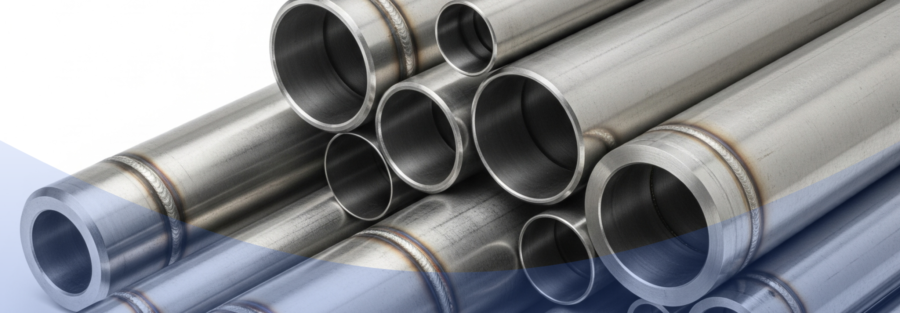Table of Contents
1. Introduction
Stainless Steel 321 is one of the most widely used austenitic stainless steel grades, known for its heat resistance, durability, and excellent weldability. Its unique advantage lies in being stabilized with titanium, which improves its resistance to intergranular corrosion during welding and high-temperature service.
In this blog, we’ll break down the chemical composition of Stainless Steel 321, explain how each element contributes to its performance, and explore its mechanical properties and industrial applications.
2. What is Stainless Steel 321?
Stainless Steel 321 is an austenitic stainless steel alloy similar to SS 304 but with the addition of titanium. This titanium stabilization prevents carbide precipitation during welding, ensuring better resistance against intergranular corrosion.
In simple terms, SS 321 is an upgraded version of SS 304, designed to perform in high-temperature environments (up to 870°C) while maintaining strength and corrosion resistance.
3. Stainless Steel 321 Chemical Composition
The chemical composition of Stainless Steel 321 is what makes this alloy unique compared to other stainless steel grades. It is an austenitic stainless steel stabilized with titanium, which prevents carbide precipitation at grain boundaries during welding and high-temperature service. This means SS 321 can handle heat-intensive applications without losing strength or corroding.
In simple terms:
- The addition of titanium is the key difference — it acts as a stabilizer that protects the alloy from intergranular corrosion.
- The balance of chromium and nickel ensures resistance against scaling, oxidation, and high-temperature damage.
- The low carbon content prevents sensitization, making it more weldable and durable.
| Element | Percentage (%) |
|---|---|
| Chromium (Cr) | 17.0 – 19.0 |
| Nickel (Ni) | 9.0 – 12.0 |
| Titanium (Ti) | ≥ 0.70 |
| Carbon (C) | ≤ 0.08 |
| Manganese (Mn) | ≤ 2.0 |
| Silicon (Si) | ≤ 1.0 |
| Phosphorus (P) | ≤ 0.045 |
| Sulfur (S) | ≤ 0.03 |
| Iron (Fe) | Balance |
4. Role of Each Element in SS 321
- Chromium (17–19%) → Provides corrosion resistance and scaling resistance at high temperatures.
- Nickel (9–12%) → Improves toughness, ductility, and strength.
- Titanium (≥0.70%) → Prevents carbide precipitation, ensuring stability during welding.
- Carbon (≤0.08%) → Low carbon content reduces the risk of sensitization.
- Manganese & Silicon → Improve hot-working properties and oxidation resistance.
- Iron (Balance) → Core structural element giving the alloy strength.
5. Mechanical Properties of Stainless Steel 321
| Property | Value |
|---|---|
| Density | 8.0 g/cm³ |
| Melting Point | 1398–1454 °C |
| Tensile Strength | 515 MPa (min) |
| Yield Strength | 205 MPa (min) |
| Elongation | 40% (min) |
| Hardness | 217 HB (max) |
6. Stainless Steel 321 vs 316: Key Differences
| Feature | SS 321 | SS 316 |
|---|---|---|
| Stabilizer | Titanium | Molybdenum |
| Heat Resistance | Excellent (up to 870°C) | Moderate (up to 600°C) |
| Corrosion Resistance | Good | Excellent in chlorides & acids |
| Best Use | Heat exchangers, aerospace, furnaces | Marine, chemical plants, pharma |
Choose SS 321 when high heat resistance is needed.
Choose SS 316 when chloride or chemical-rich environments are involved.
7. Applications of Stainless Steel 321
Stainless Steel 321 is widely used in industries such as:
- Aerospace – exhaust manifolds, jet engine components.
- Petrochemical & Refinery – catalytic converters, piping.
- Power Generation – boilers, heat exchangers, superheater tubes.
- Food Processing – sterilizers and high-heat cooking equipment.
- Automotive – exhaust systems and manifolds.
- Furnace Equipment – radiant tubes, trays, kilns, conveyors.
Stainless Steel 321 is a titanium-stabilized alloy designed for industries requiring heat resistance, corrosion resistance, and long-term durability. Its balanced chemical composition ensures strength and stability in demanding environments like aerospace, petrochemical, and power generation.
At Riyaarth Overseas, we supply premium-quality Stainless Steel 321 sheets, plates, and fittings manufactured to international standards. Contact us today to get the right material for your industrial needs
8. FAQs
SS 321 contains titanium, which prevents carbide precipitation and improves performance in high-heat environments, unlike SS 304.
SS 321 can withstand continuous exposure up to 870°C and intermittent exposure up to 925°C.
In the annealed condition, SS 321 is non-magnetic, though slight magnetism may appear after cold working.
While SS 321 offers good corrosion resistance, SS 316 is preferred for chloride and seawater-rich applications.

